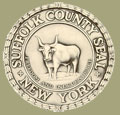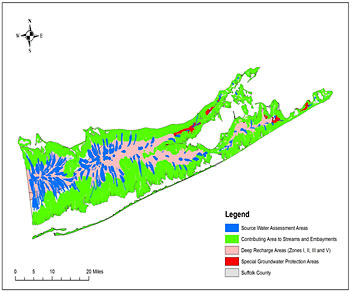|
The Law Suffolk County passed a local law (41-2007) to reduce nitrogen pollution by reducing the use of fertilizer.
Why the law? The purpose of this law is to reduce the amount of nitrogen released into the groundwater and surface water by eliminating the use of fertilizers where practicable on lawns and on County property. This will decrease the overall use of fertilizer, and optimize the use of fertilizers when they are applied. How the law affects home lawn care Application of all fertilizers between November 1st and April 1st is prohibited. This is when the potential for nitrogen leaching (nitrogen moving down through the soil) to the groundwater and runoff to our surface waters is greatest. Violators may be fined up to $1000. The story of water pollution in Suffolk County The over-application and/or misuse of fertilizer products is one of several sources that has led to the degradation in local water quality, and has harmed groundwater, drinking water, wetlands, and surface waters within Suffolk County. Excess nitrogen from any source (i.e. fertilizer, septic tanks) can threaten human health if it reaches groundwater. Groundwater is the sole source of drinking water on Long Island. Nitrogen contamination in groundwater is worsening. Studies have shown that 17% of the public water supply wells in the Upper Glacial Aquifer now exceed 6 milligrams/liter (mg/L) nitrogen (degraded). This is an increase from 9% in 1987. In fact, in 2006, 15 community public water supply wells and nearly 10% of private wells in Suffolk County were found to violate the 10 mg/L Maximum Contaminant Level (MCL) set for nitrates to ensure safe drinking water. Various factors may cause excess leaching of fertilizer nitrogen, such as the use of quick-release fertilizer and a lack of understanding of the fertilizer label. This results in excessive application rates of fertilizer. Soil type, lawn type and condition, timing of application, total nitrogen applied per year and un-calibrated application equipment and irrigation systems further contribute to the problem of excess leaching. Excess nitrogen inputs into surface water result in depressed dissolved oxygen (hypoxia). This harms aquatic life, causes excessive algal blooms, and diminishes water clarity to further impair habitat for aquatic plants. Numerous Suffolk County water bodies have been added to New York State’s list of impaired water bodies due to nitrogen over-enrichment including the sensitive, westernmost areas of the Peconic Estuary. More than half of Long Island Sound suffers from hypoxia every summer. Several areas of the South Shore Estuary Reserve are also seeing the effects of eutrophication and several fish kills have been reported throughout Suffolk County due to low dissolved oxygen levels. To protect our water, Suffolk County encourages reducing lawn fertilizer use. When fertilizing lawns, be sure to fertilize properly, at the correct rate, and at the right time of year. |
 Suffolk County, N.Y. |
Suffolk County Department of Economic Development and Planning
© Suffolk County |

